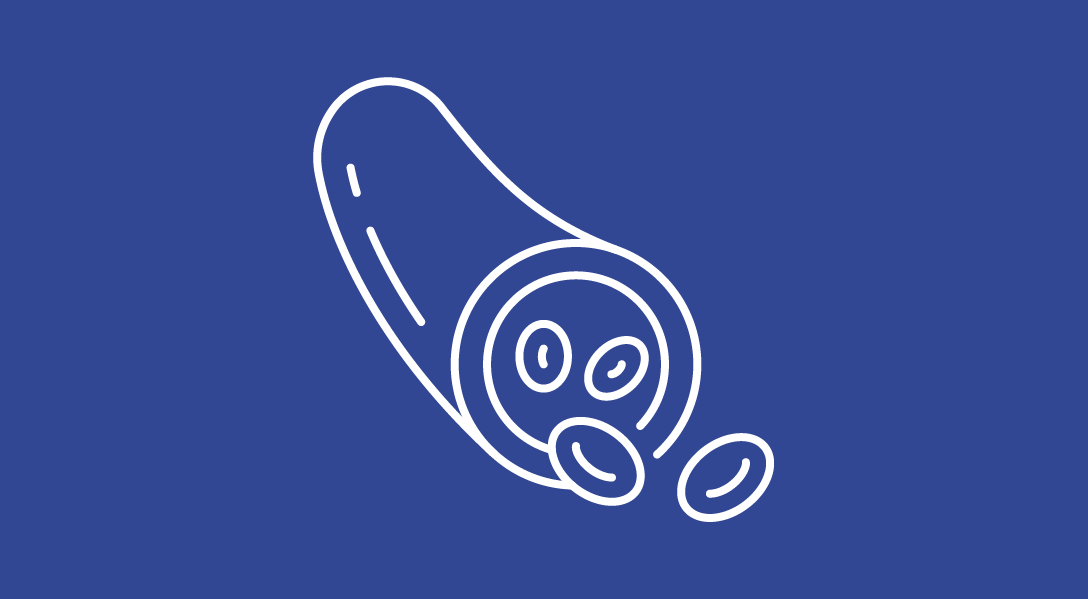Opinion: Tinengotinib Shows Promise for Cholangiocarcinoma After FGFR Inhibitor Treatment
Oncology nurses can advocate for patients with cholangiocarcinoma to participate in on-going clinical trials with tinengotinib.
Amanda Brink, DNP, APRN, FNP-BC, AOCNP

Cholangiocarcinoma is a type of cancer that affects the bile ducts, a series of tubes that carry bile from the liver and gallbladder into the small intestine, where bile aids in the digestion of fats in food.1 Cholangiocarcinoma is the second most common hepatic malignancy after hepatocellular carcinoma2 and is considered an umbrella term that encompasses three distinct types of tumors: intrahepatic, perihilar, and distal cholangiocarcinoma. Intrahepatic cholangiocarcinoma develops within the bile ducts inside the liver. Perihilar cholangiocarcinoma, often referred to as a Klatskin tumor, forms where the left and right hepatic ducts join just outside the liver. Distal cholangiocarcinoma forms farther away from the liver, near the small intestine.1
Cholangiocarcinoma is often diagnosed at an advanced stage since early-stage disease typically does not cause any symptoms. If patients can undergo surgery, it becomes the preferred treatment option for all types of cholangiocarcinoma, offering the best chance for long-term survival. However, only about 35% of patients are eligible for surgical resection, which includes liver transplantation for select patients.2
Even in patients treated with surgery, the risk of recurrence remains high. The overall 5-year-survival rate for cholangiocarcinoma is approximately 9% to 10%. It is better—approximately 17% to 24%—for those diagnosed with early-stage disease.3 As a result, most patients with cholangiocarcinoma will be treated with systemic therapy, commonly with a chemotherapy regimen of gemcitabine and cisplatin.
Newer therapies are essential to improve the prognosis for patients with cholangiocarcinoma. The utilization of molecular testing and targeted therapies, along with radiation therapy and immunotherapy, holds promise for enhancing the survival outcomes of individuals with cholangiocarcinoma.2
Phase 1 Study of Tinengotinib
Piha-Paul et al. recently published the results of a phase 1 study (NCT03654547) on tinengotinib, a multikinase inhibitor, for patients with advanced solid tumors, including cholangiocarcinoma. As a multikinase inhibitor, tinengotinib can inhibit the activity of multiple protein kinases within cancer cells, playing a crucial role in various cellular processes, such as angiogenesis and fibroblast growth factor receptors (FGFR).4
Oncology nurses may be aware of currently approved FGFR inhibitors for the treatment of cholangiocarcinoma, such as pemigatinib (Pemazyre), infigratinib (Truseltiq), and futibatinib (Lytgobi).5 However, the development of resistance underscores the need for next-generation drugs.
In this study, a total of 48 patients were enrolled, with cholangiocarcinoma being the most common primary tumor type (n = 14, 29.2%). Patients were not required to have an FGFR mutation for enrollment, and 43 patients were evaluable for response. To qualify for response evaluation, patients had to have received at least 1 dose of the study drug and undergone at least 1 post-baseline restaging scan. Notably, patients were heavily pretreated, with 70.8% having received 3 or more prior systemic anticancer therapies.
In keeping with the standard approach of phase 1 clinical trials, patients underwent treatment in small cohorts, with the dose of tinengotinib increasing gradually.
The median treatment duration with tinengotinib across all dose levels was 2.9 months (range, 0.5‒14.8). Among the 48 patients assessed for safety after receiving tinengotinib, 41 patients (85.4%) experienced adverse events (AEs) attributed to the study drug. The most prevalent AEs included hypertension (50.0%), diarrhea (33.3%), palmar-plantar erythrodysesthesia syndrome (29.2%), stomatitis (29.2%), nausea (22.9%), and vomiting (20.8%). Notably, 21 patients (43.8%) experienced drug-related grade 3 AEs, including hypertension (27.1%), stomatitis (4.2%), diarrhea (2.1%), palmar-plantar erythrodysesthesia syndrome (2.1%), and nausea (2.1%). No drug-related grade 4 or 5 AEs were reported.
Of the 43 patients evaluable for response, partial responses (PR) were observed in 7 patients (16.3%), including 3 patients with cholangiocarcinoma. Stable disease was noted in 23 patients (53.3%). Among the patients with cholangiocarcinoma who experienced a PR or prolonged stable disease (over 24 weeks), all 4 had FGFR2 alterations and had been previously treated with one or more approved FGFR inhibitors.
Nursing Considerations
When caring for patients with cholangiocarcinoma, it is crucial for oncology nurses to be aware of common molecular alterations, such as FGFR mutations, that patients may possess. Additional prevalent mutations in cholangiocarcinoma include Isocitrate dehydrogenase (IDH) mutations, which can be addressed with IDH inhibitors4; breast cancer gene (BRCA) mutations, treatable with PARP inhibitors4; and human epidermal growth factor receptor 2 (HER2) overexpression, which can be managed with HER2 inhibitors,6 among others.
When nurses possess knowledge of these mutations and their therapeutic implications, they can educate patients about the importance of tumor molecular testing and ensure that results are available. This is particularly crucial, as patients often seek care and opinions from multiple oncology providers at various institutions.
Tinengotinib is still undergoing further study in additional clinical trials. If patients are using an approved FGFR inhibitor and experience disease progression, oncology nurses can discuss with the patient’s oncologist whether enrolling in a clinical trial with this agent or another may be an appropriate next step. The development of next-generation drugs, exemplified by tinengotinib, signifies progress in the treatment of cholangiocarcinoma and offers hope to oncology nurses and patients alike.
References
- What Is Cholangiocarcinoma? American Cancer Society. Accessed February 17, 2024. https://www.cancer.org/cancer/types/bile-duct-cancer/about/what-is-bile-duct-cancer.html
- Rizvi S, Khan SA, Hallemeier CL, Kelley RK, Gores GJ. Cholangiocarcinoma - evolving concepts and therapeutic strategies. Nat Rev Clin Oncol. 2018;15(2):95-111. doi:10.1038/nrclinonc.2017.157
- Bile duct cancer (cholangiocarcinoma) - statistics. Cancer.Net. January 16, 2024. Accessed February 17, 2024. https://www.cancer.net/cancer-types/bile-duct-cancer-cholangiocarcinoma/statistics#:~:text=The%205%2Dyear%20relative%20survival%20rate%20for%20extrahepatic%20bile%20duct,relative%20survival%20rate%20is%2016%25
- Piha-Paul SA, Xu B, Dumbrava EE, et al. First-In-Human Phase I Study of Tinengotinib (TT-00420), a Multiple Kinase Inhibitor, as a Single Agent in Patients With Advanced Solid Tumors. Oncologist. Published online January 31, 2024. doi:10.1093/oncolo/oyad338
- Goyal L, Meric-Bernstam F, Hollebecque A, et al. Futibatinib for FGFR2-Rearranged Intrahepatic Cholangiocarcinoma. N Engl J Med. 2023;388(3):228-239. doi:10.1056/NEJMoa2206834
- Haaft BHT, Pedregal M, Prato J, Klümpen HJ, Moreno V, Lamarca A. Revolutionizing anti-HER2 therapies for extrahepatic cholangiocarcinoma and gallbladder cancer: Current advancements and future perspectives. Eur J Cancer. 2024;199:113564. doi:10.1016/j.ejca.2024.113564




